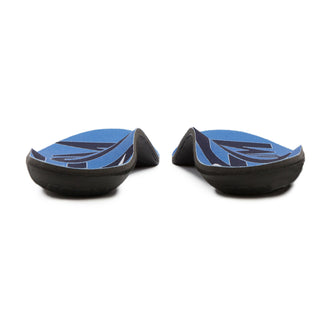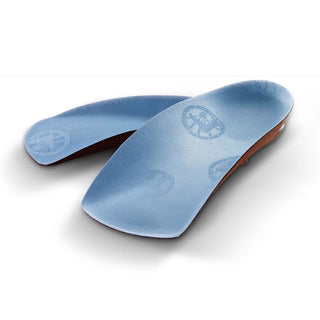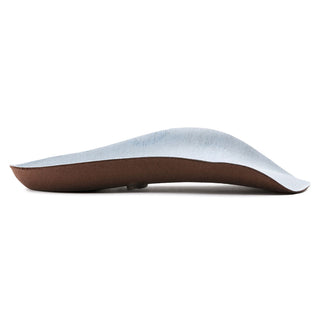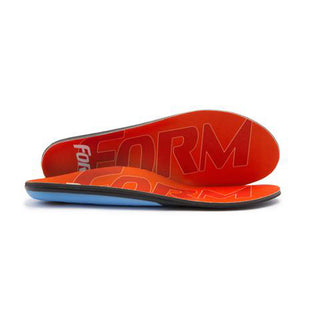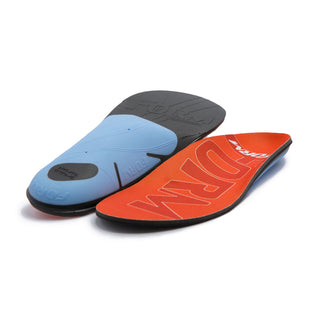Cuboid Syndrome: Causes, Symptoms, and Treatment
Recommended for Cuboid Syndrome: Causes, Symptoms, and Treatment
View allFeeling pain or discomfort towards the outer side of the foot?
It could be cuboid syndrome.
Cuboid syndrome, also known as cuboid subluxation, is a condition affecting the foot, characterized by pain and discomfort due to the partial dislocation or misalignment of the cuboid bone. Read on to learn more about what cuboid syndrome is, its symptoms, and how it’s treated.
What is Cuboid Syndrome?
The cuboid is one of the seven tarsal bones in the foot, located on the outer side near the middle of the foot. Cuboid syndrome often arises from repetitive strain or injury, leading to the cuboid bone moving out of its normal position relative to the adjacent bones.
Symptoms include pain on the lateral side of the foot, especially when bearing weight, and difficulty in walking or engaging in usual activities. The discomfort might also extend to the toes or the middle of the foot.
How Common is Cuboid Syndrome?
While cuboid syndrome is not exactly “rare,” it is more common among athletes and dancers than less-active individuals. This is because repeated stress, overuse, and trauma to the foot are the primary causes.
In fact, according to a 2011 study, 4% of athletes with foot injuries had problems in the cuboid area.
Symptoms of Cuboid Syndrome
Symptoms of Cuboid Syndrome can vary based on the severity of the injury, but generally include the following:
- Pain on the outer side of the foot is often the most noticeable symptom. This pain may intensify with activity and decrease with rest.
- Swelling or sensitivity in the area around the cuboid bone.
- Difficulty in bearing weight on the affected foot, leading to an altered gait or limping.
- Reduced mobility in the foot, especially when trying to turn the foot inwards or downwards.
- Weakness in the foot, affecting balance and the ability to perform activities.
- Tenderness when pressing on the cuboid bone area.
- Radiating pain towards the toes or into the middle of the foot.
If you feel these symptoms, it may be time to get a diagnosis from a medical professional and be put on a path to recovery.
Causes of Cuboid Syndrome
Cuboid syndrome is mainly caused by overuse or trauma to the foot, but there are other causes to be aware of as well. Here are the most common causes:
- Injury
- Overuse
- Biomechanical issues
- Improper footwear
Let’s walk through each one in more depth (no pun intended).
Injury/Trauma
When the foot twists or receives a direct impact, it can cause the ligaments around the cuboid bone to stretch or tear, leading to dislocation or misalignment of the bone. This is often seen in sports-related injuries, such as ankle sprains, where the force exerted on the foot leads to the cuboid bone moving out of place.
Overuse
Athletes, dancers, and others who engage in repetitive activities that put stress on the foot are at higher risk. Over time, the continuous pressure and strain can weaken the supporting structures around the cuboid bone, making it more susceptible to shifting. Activities that involve a lot of jumping, running, or rapid directional changes are particularly stressful for the feet.
Biomechanical issues
Individuals with flat feet or overpronation distribute weight across their feet differently, which can increase stress on the cuboid bone. These biomechanical issues can alter the natural walking or running gait, placing unusual pressure on the outer side of the foot and leading to the development of Cuboid Syndrome.
Improper Footwear
Wearing shoes that do not fit properly or that fail to provide adequate support can contribute to the onset of Cuboid Syndrome. High heels, for instance, put extra pressure on the front of the foot, potentially causing compensatory movements that stress the cuboid bone. Similarly, worn-out sports shoes may not cushion or support the foot effectively, leading to increased risk.
Treatment For Cuboid Syndrome
Cuboid syndrome rarely requires surgery to correct. Usually, it can be fixed with rest, ice, and physical therapy to relieve pressure and properly align the bones in the foot. The most common treatment options include:
- RICE
- Physical therapy
- Footwear and orthotics
RICE
RICE (rest, ice, compression, and elevation) is often a good first step for any injury. Taking a break from activities that put stress on the foot is essential to prevent further injury and allow the healing process to begin. Elevating the foot above heart level helps reduce blood flow to the area, which can decrease swelling and inflammation.
Physical Therapy
In more severe cases, physical therapy may be needed to fix the alignment of the foot and minimize the chances of repeat injury. A physical therapist may use two common treatments: the “cuboid whip” and the “cuboid squeeze.”
The Cuboid Whip
- The patient will lie on their back, bending the knee of the injured foot.
- The therapist will hold the injured foot while the patient straightens their knee quickly with the foot flexed.
- From the bottom of the foot, the therapist will forcefully push on the cuboid bone, popping it back into place.
In some cases, people can hear the cuboid springing back into place.
The Cuboid Squeeze
This method is more commonly used if pain is worse on the dorsum (top) of the foot.
- The patient will lie on their back with their legs relaxed, hanging off the table.
- Holding onto the foot, the therapist will flex it, pushing the cuboid bone down from the dorsum of the foot.
Cuboid bone manipulation is most effective during the first 24 hours after the injury. If the pain has been present for a prolonged period, several manipulations may be needed to realign the bone properly.
Footwear and Orthotics
Supportive footwear with adequate arch support and cushioning can alleviate pressure on the cuboid bone. Orthotic inserts, which can be either high-quality over-the-counter insoles or custom orthotics, can correct structural imbalances such as overpronation. They also help distribute weight more evenly across the foot.
If you opt for insoles to help ease discomfort, we recommend the following products:
Does Cuboid Syndrome Go Away on Its Own?
Cuboid syndrome may not always resolve entirely without intervention, especially if the underlying causes or contributing activities continue without modification. The condition involves the displacement or misalignment of the cuboid bone, leading to pain and discomfort. While symptoms might fluctuate in intensity and sometimes improve temporarily, without addressing the mechanical issues leading to the syndrome, it's unlikely to resolve by itself.
What to Look For in Insoles For Cuboid Syndrome
Support and proper alignment are keys to preventing cuboid syndrome. When shopping for insoles to either prevent or relieve cuboid syndrome, we recommend the following:
- Firm midsole: Choose insoles with a semi-rigid or firm midsole that limits foot motion in the midfoot where the cuboid is located, helping to prevent the twisting movements that can aggravate the condition.
- Heel stabilization: A deep heel cup helps control rearfoot movement and prevents excessive pronation or supination that can put stress on the cuboid area.
- Metatarsal pad: A properly positioned metatarsal pad just behind the cuboid area can help distribute pressure away from the injured area and provide relief. A met pad may or may not increase comfort for those with cuboid syndrome.
- Support under the lateral midfoot: Full length insoles will provide support and cushioning directly under the cuboid area. This can help reduce pressure on the injured bone.


